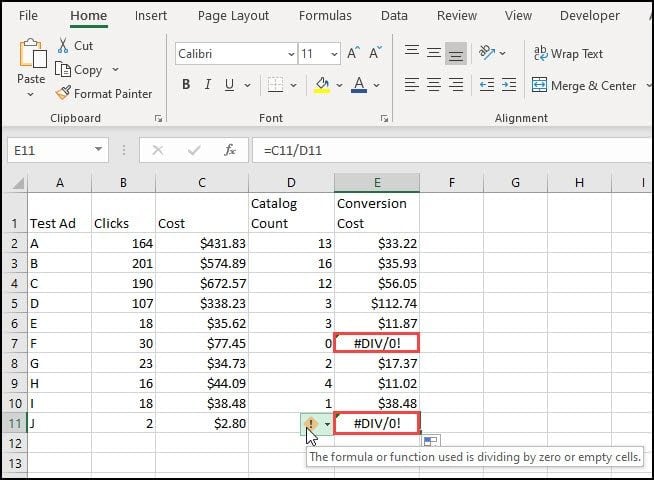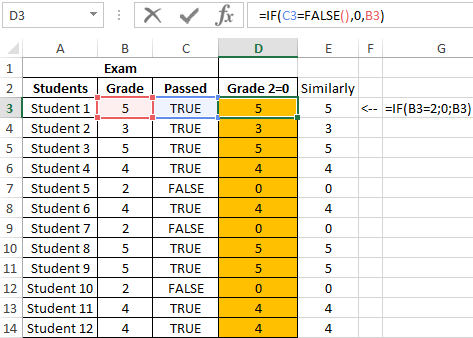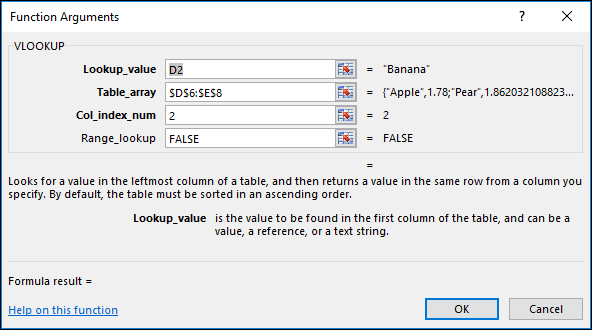

 Example 9: Using the IF function along with AND Function. Use Of AND & OR Functions or Logical Operators with Excel IF Statement. Example 8: Using the Excel IF function to return another formula a result. Example 7: Using an Excel Logical Function within the IF formula in Excel. Example 6: Using 'less than or equal to' operator within the IF statement. Example 5: Using 'greater than' operator within the IF statement.
Example 9: Using the IF function along with AND Function. Use Of AND & OR Functions or Logical Operators with Excel IF Statement. Example 8: Using the Excel IF function to return another formula a result. Example 7: Using an Excel Logical Function within the IF formula in Excel. Example 6: Using 'less than or equal to' operator within the IF statement. Example 5: Using 'greater than' operator within the IF statement.  Example 4: Using 'greater than or equal to' operator within the IF statement. Example 3: Using 'less than' operator within the IF function. Example 2: Using 'not equal to' comparison operator within the IF function. Example 1: Using 'equal to' comparison operator within the IF function. Comparison Operators That Can Be Used With IF Statements. Important Characteristics of IF Function in Excel. Using IF() yields 2, using IFERROR() yields 0 though using the "-" trick does clear the issue. (Use three cells to reference, containing "horse", "1", and "2" but only reference the first and last, using an actual "2" instead in your "to sum" range. However, IFERROR() (the more logical choice if looking at the error idea) yields a 0 when the same error exists while IF() gives the correct answer. Perhaps there is some odd situation in which it would matter? The logic in using it would not really seem to address anything.Įxperimenting on seemingly non-applicable ideas shows that if a formula in the range refers to a text item, "horse" perhaps, not using IF() produces an error that IF() seems to avoid. (For instance, if you have to ensure compatibility with older versions of Excel.) The macro-based approach will also work in versions of Excel beyond Excel 2010, if for some reason you don't want to rely on the ISFORMULA function. In order to use the function, you would simply use the following in a worksheet cell, assuming you want to sum the range A1:C7: Both are necessary because it is possible to have a text-based formula in a cell, and you don't want to try to include the results of such a formula in your sum.
Example 4: Using 'greater than or equal to' operator within the IF statement. Example 3: Using 'less than' operator within the IF function. Example 2: Using 'not equal to' comparison operator within the IF function. Example 1: Using 'equal to' comparison operator within the IF function. Comparison Operators That Can Be Used With IF Statements. Important Characteristics of IF Function in Excel. Using IF() yields 2, using IFERROR() yields 0 though using the "-" trick does clear the issue. (Use three cells to reference, containing "horse", "1", and "2" but only reference the first and last, using an actual "2" instead in your "to sum" range. However, IFERROR() (the more logical choice if looking at the error idea) yields a 0 when the same error exists while IF() gives the correct answer. Perhaps there is some odd situation in which it would matter? The logic in using it would not really seem to address anything.Įxperimenting on seemingly non-applicable ideas shows that if a formula in the range refers to a text item, "horse" perhaps, not using IF() produces an error that IF() seems to avoid. (For instance, if you have to ensure compatibility with older versions of Excel.) The macro-based approach will also work in versions of Excel beyond Excel 2010, if for some reason you don't want to rely on the ISFORMULA function. In order to use the function, you would simply use the following in a worksheet cell, assuming you want to sum the range A1:C7: Both are necessary because it is possible to have a text-based formula in a cell, and you don't want to try to include the results of such a formula in your sum. 
#How to sum a column in excel if a text is false code
Note that the code checks to make sure that the cell contains a formula (using the HasFormula property) and checks to make sure it is numeric (using the IsNumeric function). Instead, you'll need to rely on a user-defined function to do the trick: If you are using a version of Excel older than Excel 2010, then these formulas won't work. Just remember to enter using Ctrl+Shift+Enter and you'll get the proper result. If you prefer to use an array formula, you could use the following formula: The "double minus" sign before the ISFORMULA function is used to convert TRUE and FALSE values (as returned by ISFORMULA) to either 1 or 0. This formula assumes that the data range you want to sum is A1:A5. Microsoft introduced the ISFORMULA function with the release of Excel 2013, so if you are using that version (or later), determining the sum you want is quite easy. If you prefer a formula-based approach, one of the key factors here is going to be the version of Excel you are using. Excel modifies the selected cells so that only those containing formulas are selected.Īt this point you can look in the status bar (bottom of the Excel window) and see the sum of the selected cells-those containing formulas. Excel displays the Go To Special dialog box. There are many ways you could go about achieving the desired result, but I will focus on only a few of them.įirst, if you only need to determine the sum a single time and not have it appear within the worksheet itself, then you can follow these steps: According to Mandy's needs, if a cell contains an explicit value and not a formula, then it should not be included in the sum. Mandy wonders if there is a way to sum a data range and include in the sum only those cells that contain a formula.








 0 kommentar(er)
0 kommentar(er)
